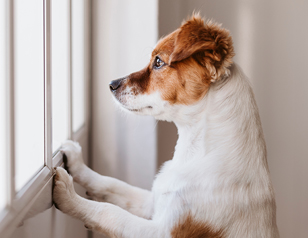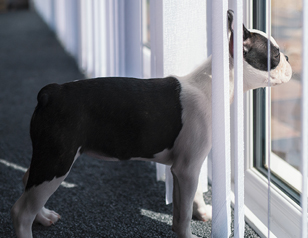How to Ease Your Dog’s Separation Anxiety
Separation anxiety in dogs is a common issue that pet owners face. It’s a distressing situation, not only for dogs but also for their owners who have to leave their pets at home. Ensuring your dog is comfortable and relaxed in your absence is crucial for their well-being and your peace of mind. This comprehensive guide aims to help you understand and address separation anxiety using effective dog training techniques.
Understanding Separation Anxiety
Dogs are inherently social creatures that thrive on companionship. When left alone, it’s natural for them to feel anxious or stressed, especially if they’re not used to being by themselves. Training your dog to manage their alone time positively is essential in preventing the development of separation anxiety. This is particularly important when they are puppies, as early training can prevent anxiety issues later.
Teaching Your Dog How to Be Alone
Initiating training early is vital. Here are a few steps to help your dog get used to being alone:
- Start with Short Intervals: Begin by leaving your dog alone for just a few minutes and gradually increase the time as they become more comfortable.
- Create a Safe Space: Designate a specific area in your home where your dog feels safe and comfortable when you’re not there.
- Use Positive Reinforcement: Reward your dog for calm behaviour when left alone to reinforce that being alone is not a negative experience.
Preparing Your Dog for Being Left Home Alone
To make your time away less stressful for your dog, consider the following tips:
Take your dog for a long walk before you go out. A good walk helps tire your dog, making them more likely to rest during your absence. This expends energy and alleviates stress, encouraging a peaceful time alone.
Make sure they have everything they need. Ensure access to fresh water, a cozy place to sleep, and engaging toys. Puzzle toys are excellent for mental stimulation and can keep your dog occupied.
Don’t make a fuss when you leave or return. Minimize anxiety by keeping departures and arrivals low-key. This teaches your dog that being alone is a normal, uneventful part of their day.
Don’t scold for anxiety-related behaviours. Understand that behaviours like chewing or barking are signs of distress. Address these with patience and seek professional guidance for behaviour modification.
Don’t leave them alone for too long. Start with short intervals alone and gradually increase as your dog adjusts. For longer absences, consider a dog walker or a friend to provide companionship.
Finding Your Dog’s Threshold for Separation
Every dog has a different limit to how long they can comfortably be left alone. Identifying your dog’s threshold is crucial in addressing separation anxiety effectively. This involves observing signs of distress and adjusting your absence to a duration they can handle without becoming anxious.
Signs of Separation Anxiety
Recognizing the signs of separation anxiety is the first step in addressing it. Common indicators include:
- Destructive behaviour
- Excessive barking or howling
- Accidents in the house, despite being house-trained
- Pacing or restlessness
- Attempts to escape from the house or crate
FAQs
What are the first signs of stress in a dog?
Early signs of stress in dogs include pacing, whining, and excessive licking.
How long can you leave an adult dog alone?
The duration can vary, but typically, adult dogs can be left alone for 4 to 6 hours. It’s essential to consider your dog’s needs, age, and health.
What are the benefits of using a baby gate to help dogs get used to spending time alone?
It allows your dog to see and hear you, reducing their anxiety while gradually getting used to physical separation.
Dog Training Classes from Our Dog School
If your dog exhibits signs of separation anxiety, it’s crucial to address the issue promptly and effectively. At Alpha Paws, we offer specialized dog training classes tailored to manage and overcome separation anxiety. Our experienced dog trainers use positive reinforcement techniques to ensure your dog becomes confident and calm when alone. Contact us today to discuss your dog’s needs.





